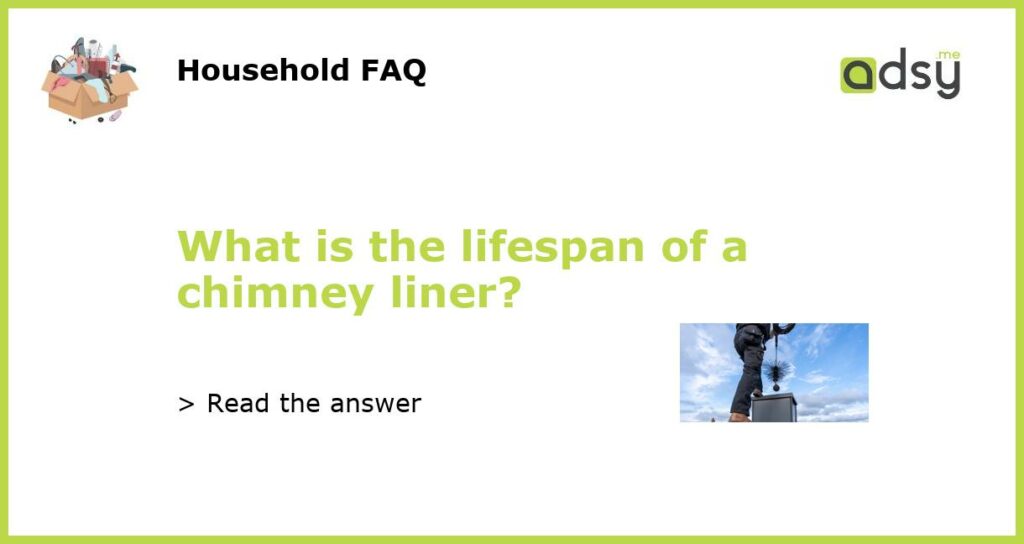What is the Lifespan of a Chimney Liner?
A chimney liner is an essential component of a safe and efficient chimney system. It protects the chimney walls from the corrosive byproducts of combustion and helps to improve the overall performance of the fireplace or heating appliance. However, like any other part of a home, a chimney liner has a limited lifespan. In this article, we will explore the factors that determine the lifespan of a chimney liner and provide guidance on when to consider replacing it.
The Material of the Chimney Liner
The material used for the chimney liner plays a significant role in determining its lifespan. The most common types of chimney liners are clay tile, stainless steel, and cast-in-place liners.
Clay tile liners are known for their durability and can last up to 50 years if properly maintained. However, they are susceptible to cracking and deteriorating over time, especially if exposed to acidic gases.
Stainless steel liners are highly resistant to corrosion and can last for several decades. They are a popular choice for both wood-burning and gas-burning appliances. The lifespan of a stainless steel liner depends on the quality of the material, installation, and maintenance.
Cast-in-place liners are made of a cement-like material that is poured into the chimney to create a seamless liner. When properly installed, they can last for 50 years or more.
Type and Frequency of Use
The type and frequency of use of the chimney also impact the lifespan of the liner. A chimney that is used frequently, especially for high-temperature fires, will experience more wear and tear compared to a chimney that is used sparingly.
Wood-burning appliances produce more creosote and soot, which can accelerate the deterioration of the liner. Additionally, the type of wood burned, such as softwoods that contain more sap, can lead to increased creosote buildup and potential damage to the liner.
Gas-burning appliances, on the other hand, produce fewer byproducts and are generally less harsh on the liner. However, the liner may still deteriorate over time due to exposure to acidic condensation.
Maintenance and Cleaning
Regular maintenance and cleaning are crucial for extending the lifespan of a chimney liner. Annual inspections and cleanings by a professional chimney sweep are recommended to identify any potential issues early on.
If creosote buildup is not properly removed, it can lead to a chimney fire, which can cause damage to the liner. The heat from a chimney fire can crack or warp clay tile liners and compromise the integrity of stainless steel liners.
Proper maintenance also includes addressing any water leakage issues. Water can cause significant damage to the chimney liner, especially if it freezes and expands. Waterproofing the exterior of the chimney and ensuring proper chimney cap and crown function can help prevent water damage.
Signs of a Damaged Chimney Liner
It’s essential to be aware of the signs that indicate a damaged chimney liner. These signs include cracked or deteriorated clay tiles, rust or corrosion on stainless steel liners, and visible gaps or holes in the liner.
Other signs include smoke entering the house, water leakage, excessive creosote buildup, and a decrease in the efficiency of the fireplace or heating appliance. If any of these signs are present, it’s crucial to address them promptly to prevent further damage and ensure the safety of the chimney system.
When to Replace a Chimney Liner
The lifespan of a chimney liner can vary depending on the factors mentioned above. However, as a general guideline, it’s recommended to consider replacing a chimney liner after 20-30 years of use.
If there are visible signs of damage or a decrease in performance, an earlier replacement may be necessary. It’s important to consult with a professional chimney sweep or a qualified chimney contractor to assess the condition of the liner and determine the best course of action.
In conclusion, the lifespan of a chimney liner depends on various factors, including the material used, type and frequency of use, maintenance, and cleaning. Regular inspections and proper maintenance are crucial for extending the lifespan of a chimney liner and ensuring the safety and efficiency of the chimney system.

